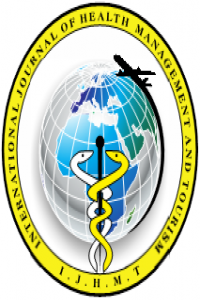Technical Efficiency Of Post-Disaster Health Services Interventions: The 2023 Kahramanmaraş Earthquake In Turkey
Technical Efficiency Of Post-Disaster Health Services Interventions: The 2023 Kahramanmaraş Earthquake In Turkey
public health, emergency, earthquake, disaster sustainability,
___
- Akbari, M. E., Asadi Lari, M., Montazeri, A., Aflatunian, M. R., & Farshad, A. A. (2005). Evaluation of health system responsiveness to the 2003 Bam, Iran, Earthquake. Earthquake Spectra, 21(1_suppl), 469-474.
- Ardagh, M. W., Richardson, S. K., Robinson, V., Than, M., Gee, P., Henderson, S., ... & Deely, J. M. (2012). The initial health-system response to the earthquake in Christchurch, New Zealand, in February, 2011. The Lancet, 379(9831), 2109-2115.
- Armenian, H. K., Melkonian, A., Noji, E. K., & Hovanesian, A. P. (1997). Deaths and injuries due to the earthquake in Armenia: a cohort approach. International journal of epidemiology, 26(4), 806-813.
- Chapin, E., Daniels, A., Elias, R., Aspilcueta, D., & Doocy, S. (2009). Impact of the 2007 Ica earthquake on health facilities and health service provision in southern Peru. Prehospital and disaster medicine, 24(4), 326-332.
- Ersoy, K., Kavuncubasi, S., Ozcan, Y. A., & Harris II, J. M. (1997). Technical efficiencies of Turkish hospitals: DEA approach. Journal of Medical Systems, 21, 67-74. Fleming, P., O'Donoghue, C., Almirall-Sanchez, A., Mockler, D., Keegan, C., Cylus, J., ... &
- Thomas, S. (2022). Metrics and indicators used to assess health system resilience in response to shocks to health systems in high income countries-A systematic review. Health Policy.
- Gülnur İlgün & Bayram Şahin (2022) Investigation of factors affecting efficiency of primary healthcare in Turkey with two-stage data envelopment analysis, International Journal of Healthcare Management, 15:1, 45-51,
- Liu, X., Tang, B., Yang, H., Liu, Y., Xue, C., & Zhang, L. (2015). The technical efficiency of earthquake medical rapid response teams following disasters: The case of the 2010 Yushu earthquake in China. International Journal of Environmental Research and Public Health, 12(12), 15390-15399.
- Liu, X., Liu, Y., Zhang, L., Liang, W., Zhu, Z., Shen, Y., ... & Liu, Z. (2013). Mass aeromedical evacuation of patients in an emergency: experience following the 2010 yushu earthquake. The Journal of Emergency Medicine, 45(6), 865-871.
- Nickerson, J. W., Hatcher-Roberts, J., Adams, O., Attaran, A., & Tugwell, P. (2015). Assessments of health services availability in humanitarian emergencies: a review of assessments in Haiti and Sudan using a health systems approach. Conflict and health, 9, 1-11.
- Robertson, A. G., Griffiths, E. K., Norton, I., & Weeramanthri, T. S. (2011). Disaster response from Australia: What is the role of Forward Teams?. Travel medicine and infectious disease, 9(5), 249-252.
- Rogers, H. L., Barros, P. P., Maeseneer, J. D., Lehtonen, L., Lionis, C., McKee, M., ... & Kringos, D. (2021). Resilience testing of health systems: How can it be done?. International journal of environmental research and public health, 18(9), 4742.
- Saberian, P., Kolivand, P. H., Hasani-Sharamin, P., Dadashi, F., & Farhoud, A. R. (2019). Iranian emergency medical service response in disaster; report of three earthquakes. Advanced journal of emergency medicine, 3(2).
- Saghafinia, M., Araghizade, H., Nafissi, N., & Asadollahi, R. (2007). Treatment management in disaster: A review of the Bam earthquake experience. Prehospital and disaster medicine, 22(6), 517-521.
- Subedi, S., Sharma, G. N., Dahal, S., Banjara, M. R., & Pandey, B. D. (2018). The health sector response to the 2015 earthquake in Nepal. Disaster medicine and public health preparedness, 12(4), 543-547.
- Thabrani, G., Irfan, M., Mesta, H. A., & Arifah, L. (2019, May). Efficiency analysis of local government health service in West Sumatra province using data envelopment analysis (DEA). In 1st International Conference on Economics, Business, Entrepreneurship, and Finance (ICEBEF 2018) (pp. 783-789). Atlantis Press.
- Yildirim, C., Kacak, H., Yildirim, S., & Kavuncubasi, S. (2019). Comprehensive Efficiency Assessment of Turkish Teaching Hospitals: Technical, Pure Technical and Scale Efficiencies with Data Envelopment Analysis. Journal of Applied Business & Economics, 21(3).
- Zeblllos, J. L. (1986). Health aspects of the Mexico earthquake—19th September. Disasters, 10, 2.
- Zhang, L., Liu, Y., Liu, X., & Zhang, Y. (2011). Rescue efforts management and characteristicsof casualties of the Wenchuan earthquake in China. Emergency medicine journal, 28(7), 618-622
- Yayın Aralığı: Yılda 3 Sayı
- Başlangıç: 2016
- Yayıncı: Dilaver TENGİLİMOĞLU
Exploring Current Issues in Health Management: A Bibliometric Analysis
Local Tours In Achieving Competitive Superiority In Medical Tourism: The Case Of Aksaray
The Use of NFT As A Payment Method In Health Tourism
The Relationship Between Queen Bee Syndrome and Leadership: A View To Healthcare Institutions
The Predictors of Quality of Life of Coronary Heart Disease Patients: A Study in Türkiye
